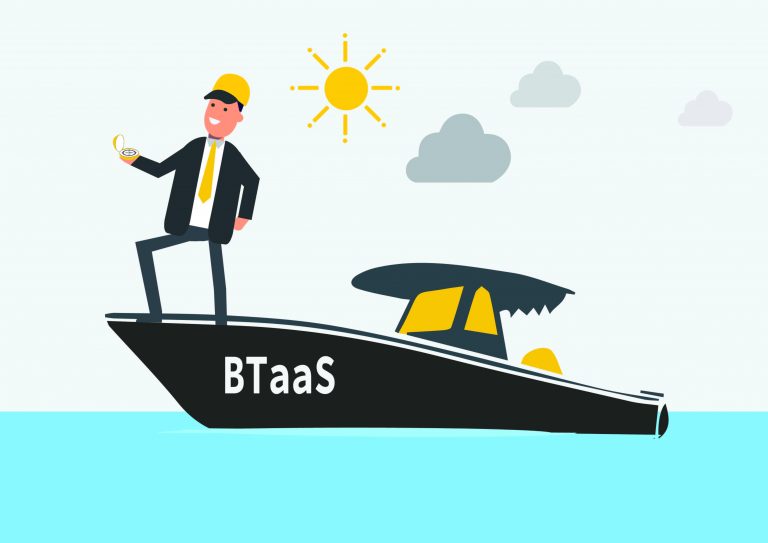An organisation’s transformation is either technology-driven or business-driven. In other words, either the business or technology is leading the transformation.
An organisation’s transformation is either technology-driven or business-driven.
Heath Gascoigne Tweet
This is true no matter what type of business or industry you’re in.
Each of these transformations has its pros and cons.
Let me explain.
Defining Key Terms
Before we get started, let’s define a few key terms:
1. Transformation
A ‘transformation’ is when a business fundamentally changes its operating model, or how it does business.
It doesn’t necessarily change ‘what’ the business does. Instead, it changes ‘how’ it does it.
For example, the Home Office UK recently underwent a transformation. They converted their paper-based Visa application into online or electronic applications.
Sure, it’s still in the business of processing Visas, but the ‘way’ they did things changed.
2. Size of transformation
The size of an organisation’s transformation is either enterprise-wide or organisation-wide.
Organisation-wide transformations are not isolated to one part or silo within the organisation.
3. Scale of transformation
The scale of the transformation or the way it’s implemented is based on a portfolio or programme of work. This consists of smaller related and dependent projects.
It’s implemented into the organisation through separate and discrete changes.
These changes may be in the form of people, process and technology changes – and are known as enablers.
Enablers ‘enable’ the business to carry out its necessary tasks.
Now….the size of the program, numbers of stakeholders involved and impact on the business means a high level of risk.
It’s so risky that business transformation has a relatively low success rate.
This is discussed in my book – “The Business Transformation Playbook”
Our HOBA approach to addressing the causes of programme failure is based on how to run a transformation programme.
Is your transformation programme a technology-driven programme or a business-driven one? Your answer will lead to different types of pros and cons.
Pros of a technology-driven transformation
The technology-driven transformation is when the technology is driving the change.
The technology-driven transformation is when the technology is driving the change.
Heath Gascoigne Tweet
It is led by technology stakeholders – either the CTO, or Technology Architect.
The pros of a technically driven transformation led by the technology architect will result in a technology-driven solution.
The con is these solutions might not be fit for the purpose, context or needs of the businesses. It might be impressive, but tech-driven solutions are also very expensive.
The Pros of a business-driven transformation
The pros of a business-driven transformation is that you’ll likely deliver the intended solution for the business.
There is a greater focus on discovery, as opposed to delivery. So, the businesses’ concerns and needs are understood before they are implemented.
The transformation is also focuses on design and implementation.
Of course, the con is that it takes longer, but the benefits can be worth it.
The final solution fulfills what it intends to do.
….and this is where the frustration comes from.
If it takes too long, the businesses and their technical counterparts get anxious when they don’t see any activity.
Of course, those who use HOBA won’t be impatient. Due to the agile approach, they’ll see what work is planned, underway and completed.
With HOBA, there’s a fully defined process of transformation based on what is already known, and what it looks like.
Technology-driven or business-driven?
Should you choose a technology-driven or business-driven transformation?
Whether the programme is business or technology-driven, everyone in the organisation has a role. The transformation success is never based on one person or a team of people, rather “transformation is everyone’s business”.
Technical Architects need Business Architects, and vice-versa.
Furthermore, no one can successfully transform the Business without being aware of the C-level strategic or stakeholder needs and concerns.
They need to understand the organisation’s current position and where it will be in the future. They need to know the concerns of ops staff who interact with customers face-to-face.
The other people involved in the transformation could include:
Programme or project people – programme director or manager, project manager, business change manager, training manager, PMO.
Business stakeholders – executives and financial advisors who make the financial and non-financial decisions on the aspects involved to transform the business.
Customers and End Users – external business stakeholders who are the ultimate beneficiaries of the changes.
System and data analysts – analysts who translate these high level business needs into system and implementation requirements for the developers.
And many more!
Gone are the days when you could point the finger at another party and say “it’s their responsibility”.
Its actually “our” responsibility.
Everyone in the change or transformation team is responsible, which is in line with the true ‘scrum’ approach of accountability.
The whole team is accountable, because you either fail or succeeds as a team.
While there might be misunderstandings, it’s also everyone’s responsibility to ensure that there is no ambiguity or, or lack of clarity in the implementation of business transformation.
Remember: 2mm deviations can get you off the track to success, and get you to end up miles off target.
This results in wasted time, money and missed opportunities.
Thank you for reading this!
Sincerely,
Heath Gascoigne
P.S. Remember: An organisation’s transformation is either technology-driven or business-driven. Whichever you choose, everyone in the organisation is responsible for its success.
P.P.S. If you want to learn more about business transformation, or what a real Business Architect does on a day-to-day basis in transforming businesses, check out The Business Transformation Playbook here.
For more information, visit https://hoba.tech












